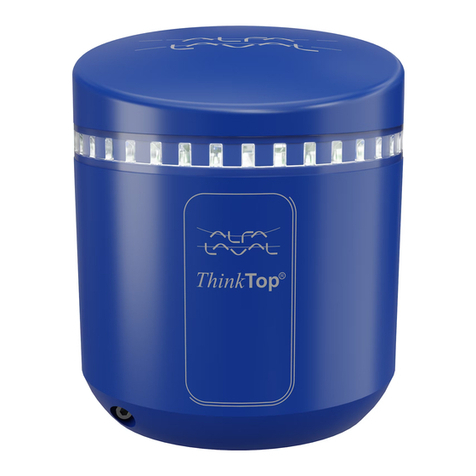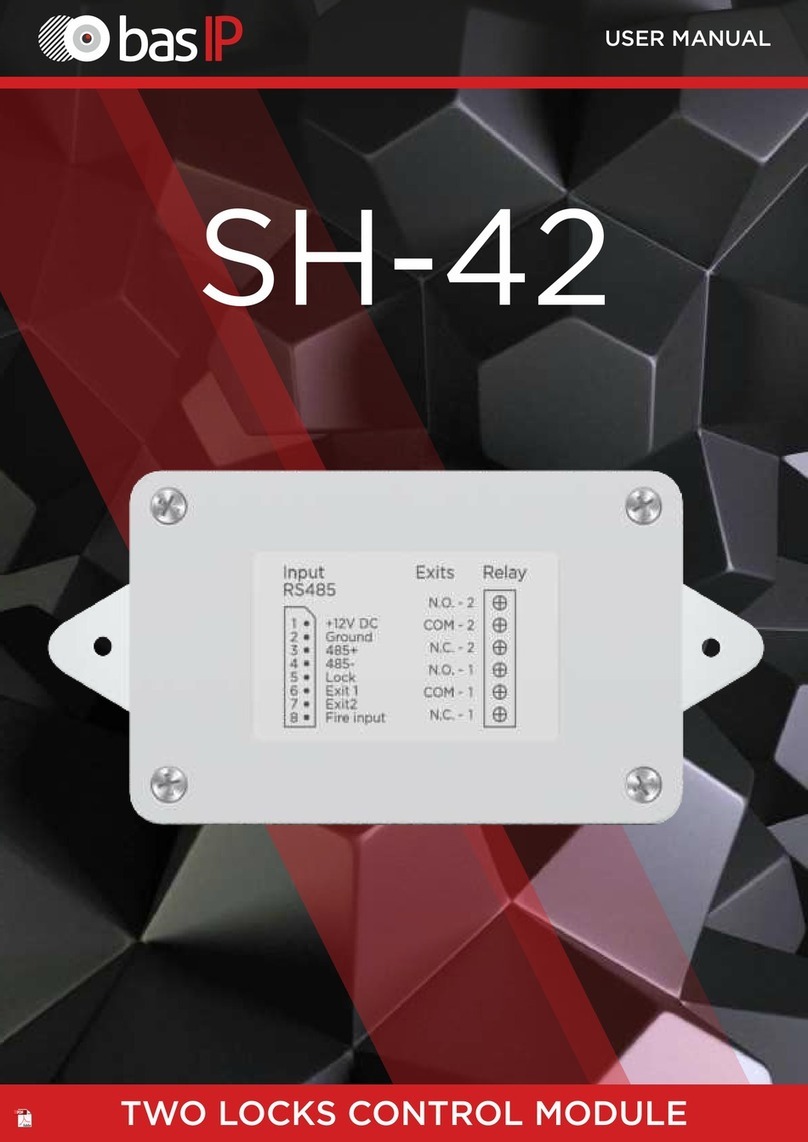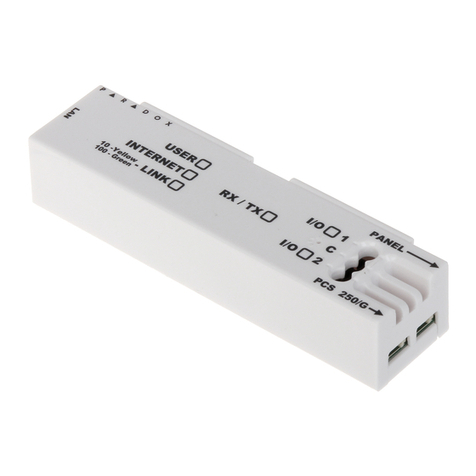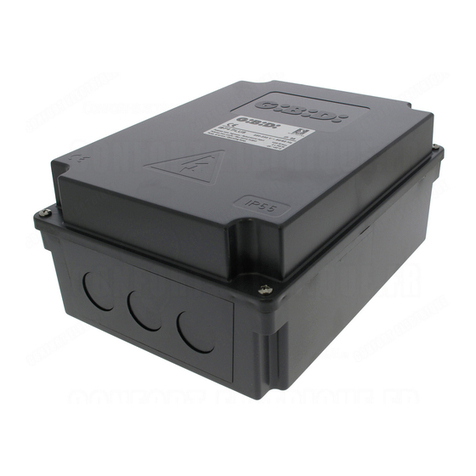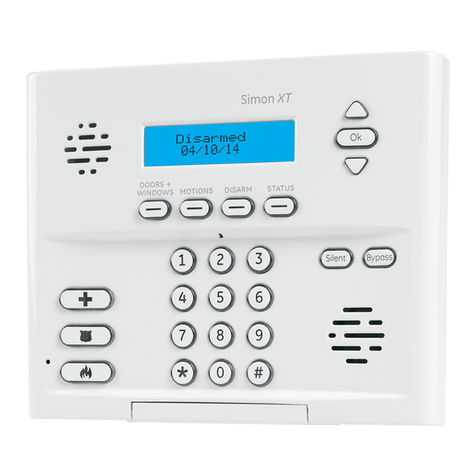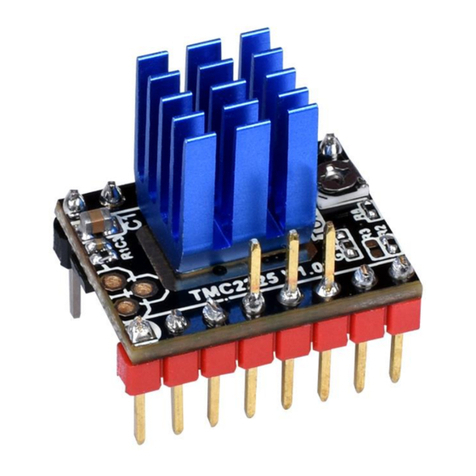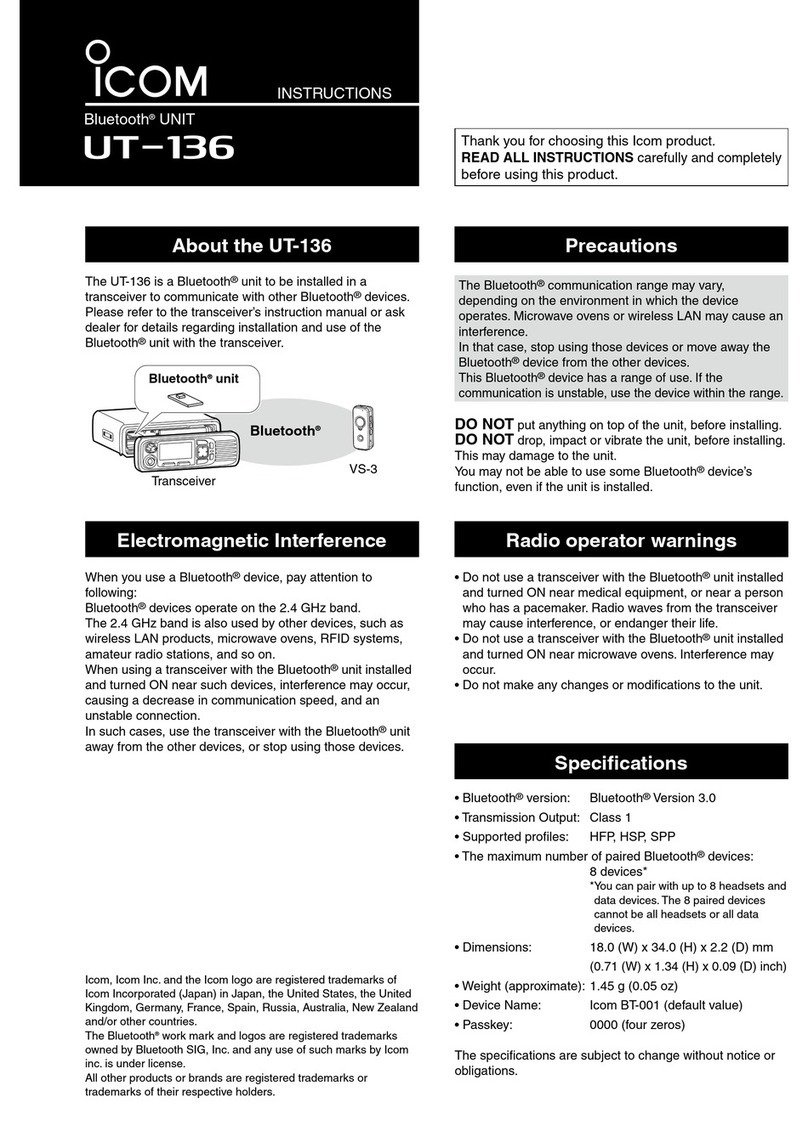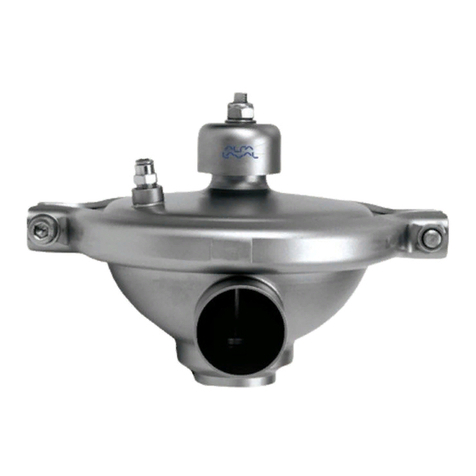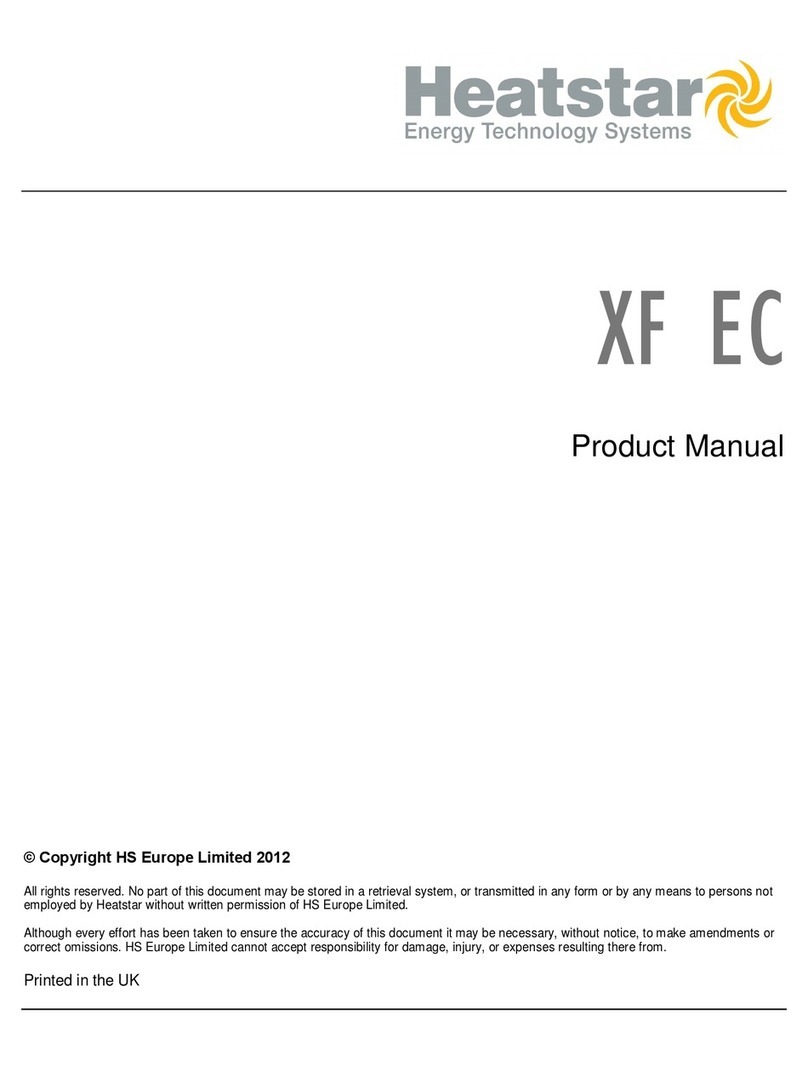GF Welding Weld334m User manual

USER’S MANUAL
Weld334m
HC
HCM
HIC
HIM
Ed.5 – December 2004 Doc.39000326

Weld334m - User’s manual
II
GF WELDING S.p.A.
Strada del Portone, 18/24 – 10137 – TORINO (Italia)
Tel.:
Tel.:
Fax:
e-mail:
web:
011-3033.278 (Italy Sales dept.)
011-3033.270-279 (Foreign Sales dept.)
011-3033.277 (Italy After Sales)
011-3033.274 (Foreign After Sales)
011-3092046
mail@gf-welding.it
www.gf-welding.it
The information contained in this manual may be changed at any time without prior notice; in this
case, GF WELDING S.p.A. is relieved of any responsibility.
The information on the software and hardware tools contained herein are confidential and are
released in conformity with a licence contract.
It is absolutely prohibited to distribute or circulate the hardware and software documentation of
this product to third parties.
The purchaser is allowed to prepare the software safety backup copy in the quantity of one copy
only.
No part of this manual may be reproduced or distributed in any form or by any means or stored in
a database or retrieval system without the prior written permission of GF WELDING S.p.A.
All rights reserved to GF WELDING S.p.A.

Weld334m - User’s manual
III
Table of contents
WHITE PAGE................................................................................................................................................. VI
1. SAFETY ..........................................................................................................................................................1
1.1 HAZARDS ASSOCIATED WITH THE USE OF RESISTANCE WELDING MACHINES ...............................................2
1.1.1 ! Prohibitions......................................................................................................................................2
1.1.2 ! Conditions to be respected to reduce the hazard .............................................................................2
1.1.3 ! Causes of hazard..............................................................................................................................2
1.2 OBSERVATIONS ON CONNECTIONS..............................................................................................................4
1.2.1 Earthing, insulation............................................................................................................................4
1.2.2 Safety criteria against short circuits ..................................................................................................4
1.2.3 Current sensor....................................................................................................................................5
1.2.4 Power supply ......................................................................................................................................6
1.2.5 Phase synchronising for welding........................................................................................................7
1.2.6 Programming unit ..............................................................................................................................7
1.2.7 Connecting the Weld334m with the WMS central network ................................................................7
2. CHARACTERISTICS AND GENERAL DESCRIPTION OF THE WELD334M ..................................9
2.1 GENERAL DESCRIPTION ..............................................................................................................................9
2.2 BLOCK DIAGRAM OF 334M.......................................................................................................................10
2.3 HARDWARE CONFIGURATION....................................................................................................................11
2.4 CHARACTERISTICS....................................................................................................................................12
2.4.1 Utilisation characteristics ................................................................................................................13
2.4.2 Dimensions, overall dimensions and fastening positions. ................................................................13
2.4.3 HHT4300 programming unit............................................................................................................14
2.4.4 Connection through Laptop .............................................................................................................14
3. POWER SUPPLY AND 24V FOR I/O .......................................................................................................15
3.1 CONTROL DEVICE POWER SUPPLY.............................................................................................................15
3.1.1 PS . Description of signals ...............................................................................................................15
3.1.2 Connections for main power supply. ................................................................................................16
3.1.3 Power consumption ..........................................................................................................................17
3.2 USE OF 24V - I/O .....................................................................................................................................17
3.2.1 Selecting 24V – internal or external.................................................................................................17
3.2.2 24V connections for discrete I/O......................................................................................................18
3.3 GENERAL PROTECTIVE DEVICES ON POWER SUPPLY..................................................................................20
3.4 SETTING THE EXTERNAL SYNCHRONISM ...................................................................................................21
4. F351-BUS INTERCONNECTION CARD ................................................................................................23
5. F384-CPU MICROPROCESSOR CARD ..................................................................................................25
6. F353-ADC ANALOGUE CARD .................................................................................................................27
6.1 P3 E P4 . DESCRIPTION OF THE ANALOGUE INPUTS...................................................................................27
6.2 P2 . DESCRIPTION OF THE SIGNALS FOR THE SOLENOID VALVE AND THE TFE ..........................................28
7. F364-SEV AND F385-SEV: PROPORTIONAL SERVOVALVE MODULES ......................................31
7.1 SERVOVALVE ADJUST: .............................................................................................................................31
7.1.1 Voltage outlet characteristics...........................................................................................................32
7.1.2 Current outlet characteristics...........................................................................................................32
7.2 CONNECTION OF THE F364 / F385-SEV MODULE ON THE F353-ADC CARD............................................32
7.2.1 Jumper function on connector J4 .....................................................................................................33
7.2.2 Jumper function on connector J5 .....................................................................................................33
8. F359-MCP MEMORY CARD AND PRINTER ........................................................................................35

Weld334m - User’s manual
IV
9. F360-IOB CARD – BASE I/O..................................................................................................................... 37
9.1 DESCRIPTION OF FUNCTIONS.................................................................................................................... 37
9.2 P20 24VDC - I/O .................................................................................................................................... 37
9.3 P22 - HSA – CIRCUIT BREAKER TRIP....................................................................................................... 37
9.4 P21 . DESCRIPTION OF SIGNALS ............................................................................................................... 38
10. F356-IOE I/O EXPANSION CARD ....................................................................................................... 41
10.1 P23 . DESCRIPTION OF OUTPUT SIGNALS .............................................................................................. 41
10.2 P24 . DESCRIPTION OF INPUT SIGNALS.................................................................................................. 44
10.2.1 List of program selection codes ................................................................................................... 47
11. F376-OPC FIELD-BUS INTERBUS-S CARD (PROFILE F-IBS/03)................................................. 49
11.1 CHARACTERISTICS ............................................................................................................................... 49
11.2 OPTICAL CONNECTORS INTERBUS-S .................................................................................................... 49
11.3 INTERBUS-S INTERFACE POWER SUPPLY .............................................................................................. 50
11.4 DESCRIPTION OF STATUS LEDS............................................................................................................ 50
IDENTIFICATION CODE (ID CODE) ...................................................................................................................... 51
11.5 ERROR CONDITIONS WITH THE CONTROL DEVICE SHUT DOWN.............................................................. 51
11.6 OPTICAL POWER REGULATION .............................................................................................................. 51
12. F386 ETHERNET 100BASE-T AND CANBUS COMMUNICATION MODULE............................ 53
12.1 TECHNICAL FEATURES ......................................................................................................................... 53
12.1.1 Ethernet section ........................................................................................................................... 53
12.1.2 CANbus section............................................................................................................................ 53
12.2 FRONT PANEL....................................................................................................................................... 53
12.2.1 P28 – CANbus connector............................................................................................................. 53
12.2.2 CANbus status LED’s................................................................................................................... 53
12.2.3 P10 Ethernet 100Base-T connector ............................................................................................. 54
12.2.4 Ethernet status LED’s .................................................................................................................. 54
12.3 ETHERNET CONNECTION CABLE ........................................................................................................... 54
12.3.1 Features ....................................................................................................................................... 54
12.3.2 Connection type ........................................................................................................................... 54
13. F383-COM RS422 SERIAL COMMUNICATION CARD .................................................................. 57
13.1 P15 – CONNECTION PORT .................................................................................................................... 57
14. INTERBUS-S PROFIL F-IBS/03............................................................................................................ 59
14.1 GENERAL DESCRIPTION ........................................................................................................................ 59
14.1.1 Control Words.............................................................................................................................. 59
14.1.2 Status Words ................................................................................................................................ 63
14.2 ROBOT DIRECTIVES UPDATE ................................................................................................................. 66
APPENDIX.......................................................................................................................................................... 67
APPENDIX A - MAINTENANCE ........................................................................................................................ 69
Maintenance operations ................................................................................................................................ 69
Replacing the modular cards.........................................................................................................................................69
Replacing the CPU card................................................................................................................................................70
Replacing the power feeder...........................................................................................................................................70
Replacing the welding control device ...........................................................................................................................71
Modifying a welding program:......................................................................................................................................71
Replacing the battery ....................................................................................................................................................72
APPENDIX B – DIAGRAMS AND NETWORK CONFIGURATIONS.......................................................................... 73
Operating diagrams....................................................................................................................................... 73
1 – START recognition with use in automated environment ........................................................................................73
2 – START recognition with use in manual environment.............................................................................................74
3 – EMERGENCY STOP condition : general diagram ................................................................................................75
4 – EMERGENCY STOP condition during or outside the welding pulse....................................................................76
5 – EMERGENCY STOP excluded with START still active .......................................................................................77
6 – START disabled condition during the welding pulse .............................................................................................77
7 – Proportional Servovalve operating diagram............................................................................................................78
8 – ENABLE function (Interbus-s)...............................................................................................................................79

Weld334m - User’s manual
V
9 – Diagram of diagnostic pressure control .................................................................................................................. 80
Interbus-S –general architecture of I/O communications. .............................................................................81
Ethernet Tcp/Ip – Example of network architecture ..................................................................................................... 82
InterBus-S- Example of network architecture............................................................................................................... 83
WHITE PAGE.................................................................................................................................................84
APPENDIX C - WELD334M APPLICATION DIAGRAM .......................................................................................85

Weld334m - User’s manual
VI
WHITE PAGE

Weld334m - User’s manual
1
1. Safety
To insure correct installation and operation of the WELD334m welding control device, it is
necessary to carefully read this chapter. Each operation on the machine is to be carried out
only by qualified personnel with good understanding of the information contained in this
manual; should the documentation not be perfectly legible and/or incomplete of any further
information required, please consult GF WELDING S.p.A. before undertaking any work on
the machine.
Inside the welding control, signals are generated which set parts of the machine in motion;
therefore, it is prohibited to open and tamper with the control and safety circuits. Live
metal parts, such as screws or similar parts, penetrating into the electric circuit may cause
malfunctioning as well as the generation of incorrect and hazardous conditions and events.
It should be remembered that any changes and/or modifications not expressly authorised
by the manufacturer or performed by unauthorised personnel or non-GF WELDING
personnel which modifies the machine operation makes the warranty void.
Check all cables and the relevant connections before using the welding control device in
order to see if there is any mechanical damage or failing insulation. Whenever a problem
arises such as to compromise the safety conditions, switch off the unit and cut out power.
Report the problem to GF WELDING After Sales Personnel.
To ensure the optimal performance of the device, the user must make sure that all
requirements for safety on the work site are strictly adhere to.

Weld334m - User’s manual
2
1.1 Hazards associated with the use of resistance welding machines
Because of the presence of electric current and live parts in the machine, mounting,
maintenance work and replacement of genuine parts is only to be entrusted to Qualified
Personnel (electricians or authorised personnel). All work undertaken is to be done in safety
conditions. The non-observance of these requirements can cause death, injury to persons
or damage to machine and property.
1.1.1 ! Prohibitions
•It is prohibited to work on the live installation.
•It is prohibited to remove by-pass and modify the safety devices as this could cause
serious risks to personnel and equipment and could lead to death.
1.1.2 ! Conditions to be respected to reduce the hazard
•Always insure that the electric switchboard main switch is OFF.
•Work on the machine, equipment and the welding transformer only after breaking
the connection from the mains. This to be sure that no undesired switching of
electrical current occurs.
•Work on the spotgun and welding cable connections only after breaking the
connection from the mains power.
1.1.3 ! Causes of hazard
•The programming of the welding control is entrusted only to qualified personnel.
Incorrect parameter settings may cause damage or injury because of undesired
molten material splashes during welding.
•It is compulsory to wear protective goggles, non-flammable clothes and protective
shoes.
•Dangerous conditions may arise when, for example, electrodes are changed or
dressed and no current re-adaptation/re-setting takes place, especially when using
the stepper function (stepper reset).
•If 24V power supply is external to the machine or the control device, power may be
applied to the equipment even if the main switch connection is broken.
•During mounting, setting of work, maintenance and/or repair operations, hazards
may occur because of the exchange of leads, air/water pipes, etc…
•Unqualified personnel may be unaware of the risk that such changes/modifications
entail, therefore, all changes/modifications are only to be entrusted to and/or
performed by qualified personnel.
•Hazardous situations may arise because of mains voltage drops, or in case of tripping
of the machine emergency stop device, which causes the return to rest position of
the pneumatic valves in use during the operation (this situation affects the whole
plant).
•If during the welding process the cooling water flow is low or non-existent, it is
prohibited to bypass or inhibit the tripping of thermostats or the water flow control
device (if installed).

Weld334m - User’s manual
3
•High magnetic fields, generating very close to the welding gun and the secondary
cable, represent a serious hazard to people and property (e.g.: watches, cables for
electric data transmission, magnetic devices, medical equipment and pace-makers).
•Welding is obtained through the periodical repetition of high single-phase, short-time
and low cosphi current pulses. These conditions of use may cause disturbances to the
power lines of the production plant and may be hazardous for other types of
operating machines or machine tools.
•Outputs of the welding control device solenoid valves are all protected by a series-
connected contact of the cycle start relay. This to prevent any faults or disturbances
of the electronic outputs from causing undesired controls. (The Start cycle function is
equipped with a time-dependant consent control at the plants and countries
demanding for it).
•In cases where local safety regulations require or prescribe such as for machine start
– for instance: two-hand cycle start controls with check of simultaneous operation –
these devices shall have to be implemented when installing the system.
•Outputs for the pre-stroke solenoid valves controlling the additional gun opening,
feature direct control as well as the output for the proportional solenoid valve.
•These two outputs do not cause any movement nor do they operate the gun to close
fully.

Weld334m - User’s manual
4
1.2 Observations on connections
1.2.1 Earthing, insulation
This paragraph deals with the earthing of the equipment, please ensure that all earthing is
correctly carried out.
•The correct earthing of each part of the electric system is a compulsory precaution,
in order to ensure the plant workers/operators safety.
•Furthermore, earthing is of paramount importance to avoid damage to the
installation itself. Periodically check the status of earth connection of all cables and
terminal cards.
•Special care is to be paid to connections with moving and metal parts, making sure
there is no oxidation of connection and that the electrical connections are made
against painted areas.
•To have correct earthing, it is fundamental to avoid series connecting the whole earth
installation or part of it with only one cable. It is also important to check that, for
each machine, the earth is star connected at the fixing point of the earth cable.
•Some types of welding machines need for the earth connection of the transformer
secondary to be made outside of the machine.
•The Weld334m is a sophisticated, microprocessor controlled equipment which can
also be used in environments showing «electromagnetic field pollution». In the
design phase, systems have been adopted which respect the EMC requirements with
the surrounding ambient. It is recommended to scrupulously observe the conditions
of use (meaning by this that the Weld334m cabinet is to be closed and all its earth
leads must be connected).
•In compliance with the accident prevention Standards, the welding control does not
act directly on the SCR block; the SCR switching is operated through a special
external firing circuit which is isolated from high voltage present on the power circuit.
1.2.2 Safety criteria against short circuits
On a welding machine, the short circuit is likely to occur on the transformer primary side.
This may entail very serious consequences such as, for example:
•On a Robot or an automatic installation, the destruction of parts onto which the short
circuit current is discharged.
•On a manual station, the electrical shock of the operator and damage to the
equipment.
The short circuit may occur between the primary and ground or between the primary and
the secondary.
380/500V
TRS
Robot arm

Weld334m - User’s manual
5
Here below are a few measures which are to be taken in order to avoid harm and damage to
operators and equipment:
1. Earth the welding transformer secondary.
2. Install a differential on the welding transformer primary set to the minimum value of
current (30mA).
TRS
Differential/switch unit
380/500V D
3. Use a safety device to monitor the value of voltage on the welding guns with respect to
earth. This device should be linked to circuit breaker trip.
380/500V
TRS
V
Voltage sensor
Switch
1.2.3 Current sensor
The current sensor, also known as current coil or Rogowsky coil, thoroid or, sometimes,
more improperly, CT (current transformer), is the device by which the control device
measures and adjusts the welding current during the welding process.
Irrespective of the specifications and standards of the electric transducer characteristics, a
few fundamental rules are however to be applied concerning the position of the transducer
and its relevant wiring. This to minimise errors due to electric and, mainly, magnetic
disturbances.
The reliability and accuracy of the ammeter directly depend on the correct positioning as
well as on the adequate protection against external disturbances.
If the sensor is built into the welding transformer, problems concerning the respect of a few
of the Standards have already been solved in the transformer design phase.
As for sensor positioning, the following requirements are to be adhered to:
•The sensor is to be located in the welding secondary circuit.
•The plane to which the sensor is mounted must be orthogonal to the lead run
through by current it measures, that is 90°.
•The sensor, if external to the welding transformer, must be placed as close as
possible to the welding electrodes. Thus, maximum accuracy is achieved. However,
this mounting position is not always possible. A good compromise lies in mounting
the sensors in the rear part of the guns, near the cable adapter. Provide for
protection against shocks. It can however be always placed at the transformer
secondary output.

Weld334m - User’s manual
6
•The lead run through by current is to be placed in the middle of the thoroid.
•The sensor is to be placed as far as possible away from any edges or elbows of the
secondary lead.
•As for the turn formed by the secondary circuit, it is necessary to mount the sensor
in a position so that the distance between the go and return conductor be the
maximum possible one.
As for the sensor connections, the following requirements are to be adhered to:
•The connection cable is to be tightly twisted and screened and is to be run as short
as possible. In any case, its laying is to be done as far as possible away from sources
of electrical or magnetic disturbances and it must not be run in parallel with the cable
for welding component (primary + secondary).
•The cable screen must be bonded on only one side of the welding control, whereas
no sensor end is to be bonded.
•Accurately avoid joints or provisional connections between the sensor and the
connector of the welding control in order to minimise any inductive and capacitive
effects. If possible, minimise the quantity of interruptions (terminal boards and/or
plugs).
•Do not use fuses on the current sensor conductors.
The rules cited above are to be observed by all users carrying out installations and wiring
as well as by those who design and manufacture electric switchboards in cabinets,
transformers and other equipment which are someway associated or associable to current
sensors. The non-observance of these rules entails loss of accuracy and repeatability in the
welding process with constant current control device. In addition, this could cause serious
malfunctioning.
•It is recommended to use current sensors featuring 150 mV/kA /1k Ω sensitivity
and with a 20-25 Ωinternal resistor (these can be ordered from GF WELDING S.p.A.)
•The Weld334m permits using up to 6 sensors in series (one at a time is active when
welding). The quantity of sensors connected is to be set on the welding device (see
Programming manual, Setup chapter).
1.2.4 Power supply
Depending on the configurations, the Weld334m input can be both direct current and
alternated current (See operating characteristics).
One assumes that power supplied to the system is «clean», meaning it is free from
electrical disturbances and showing no voltage drops.
In case of AC, it is recommended to use a power/insulation transformer with earthed
electrostatic shielding.

Weld334m - User’s manual
7
1.2.5 Phase synchronising for welding
To have correct welding operation, the device is to be synchronised with the same power
phase as the SCRs it is piloting.
Considering the power supply features of the device, synchronising may take place in a
different manner, depending on the following cases:
•If powered from the Ac mains, it is sufficient for the transformer powering the device
to be connected with the same power phase as SCRs.
•If powered from a power line other than that of SCRs or DC powered, the sync. signal
must be taken from the power side through an insulation transformer. For the use of
the external synchronism, see paragraph 3.4
The non-observance of these rules will cause serious malfunctioning.
1.2.6 Programming unit
Great care is to be paid to the switching on and off of the HCM 4300 HHT graphic
programming unit.
The input port can be damaged both because of a short circuit during the connection work
and further to electrostatic charges. Put the HHT metal casing in touch with that of the
Weld334m before installing the connector. This will discharge the static charge.
Make sure no foreign bodies, such as metal chips or slags, fall inside the connector.
Any damage to the HCM 4300 HHT graphic programming unit and to the Weld334m,
resulting from tampering or deliberate disregard, will void the guarantee.
1.2.7 Connecting the Weld334m with the WMS central network
To centralise the welding zones, GF WELDING has developed a program called WMS
(Welding Management System). All control devices installed in a given welding zone can be
accessed directly through a serial line linked to a PC.
The program permits interacting with all control devices and, at the same time, controlling
the whole welding process of the zone concerned.
Communication is performed through: the WMSNet associated to an RS485 multidrop
network, or PROFIBUS FMS or ETHERNET TCP/IP.
The serial port of the device has been designed to operate in industrial environment where
a number of pulse and electric disturbances are present. To protect the input stages, these
are fitted with disturbance suppression circuits, whereas the output stages provide signals
ensuring nearly disturbance free level.
For the application of the welding control devices in the WMSNet, PROFIBUS FMS or
ETHERNET TCP/IP centralising network, refer to the relevant specifications.
While implementing the line, a few practical requirements are to be observed by the user.
•Avoid long common paths of line cables with power cables. Do not forget this
warning specially when planning the lines and the network.
•Limit the network cable length to the minimum required. (Respect the RS485,
PROFIBUS or ETHERNET requirements for length).
In addition, the best results are achieved if the following is taken into consideration:
•Terminate the line as specified in the installation manual of the network card.
•Connect all controls with the network interface card (daisy connection) so to have
only one line of transmission.
•The cable is to comply with the relevant RS485, Profibus or Ethernet specifications.

Weld334m - User’s manual
8
WHITE PAGE

Weld334m - User’s manual
9
2. Characteristics and general description of the Weld334m
2.1 General description
The Weld334m is a control device intended for single-phase AC powered, resistance welding
machines. It is capable of managing all the operations run by the machine it is associated
with; the Weld334m also provides adequate diagnostics for the plant and welding process
and carries out welding current regulation by chopping the voltage applied to the power
transformer.
The Weld334m can be field programmed via the HHT4300 graphic unit or, through the
centralising network, via a remote computer equipped with the WMS software and the
adequate communication card.
It permits running up to a maximum of 255 welding programs and 16 different self-
increment programs (stepper). The internally mounted clock provides the correct absolute
timing reference; this function is also available for the stand-alone utilisation, meaning with
independent control.
The HHT4300 programming unit is removable, thereby preventing any interference of
unauthorised personnel on the welding programs.
The operating frequency of the unit is 50Hz or 60Hz.
Facility is also provided to memorise and transfer data and programs through a commercially
available PCMCIA type memory card.
The welding control interfaces with a number of equipment and actuators, e.g. welding
solenoid valves, process controllers (PLC) and robots, by connecting with the field or with
standard wiring or through a serial line (optic fiber) in conformity with the Profil-C0 protocol
of Interbus-S standard.

Weld334m - User’s manual
10
2.2 Block diagram of 334m
The 334m can be divided into two separate functional blocks.
The first block is the basic part of the system and consists of the main cards, which must
always be installed, two internal fixed cards (power feeder and BUS) and three removable
ones (CPU, I/OB and ADC).
The second functional block consists of the additional configuration card pack: I/O
Expansion, Memory Card/Printer, EVS Proportional, Network.
Through these cards, the control device can:
•Be configured for advanced or special applications which are used in the resistance
welding field
•Be upgraded with optional functions such as proportional solenoid valves or o memory
card
•Manage a serial communication port to the welding central unit
The block diagram is shown below.
WELD334m
I/O Expansion,
Communication
ports,
Drivers
ADC
Power feeder
CPU
Basic card pack Modules
Base I/O
Additional cards pack
Display
B
U
S

Weld334m - User’s manual
11
2.3 Hardware configuration
Every function has been housed on a dedicated card; in addition to this, 24Vdc discrete
inputs and outputs are divided into Base and Expansion types.
The first position on the BUS, near connectors P1 and JP1, is to be compulsorily dedicated
to the card CPU.
List of available cards:
Card order
code
33037000
33035100
33036300
33038400
33035300
33036400
33036000
33035600
33037600
33035900
33038100
33038600
Card name
F370 PSM
F351 BUS
F363 DPY
F384 CPU
F353 ADC
F364 SEV
F360 IOB
F356 IOE
F376-OPC
F359-MCP
F381-ETH
F386-ETH
Card description
Order code Type
Power supply
BUS – interconnection card
4-digit Display
CPU
Analogue card
Proportional servovalve module
Basic I/O Terminal
Expansion I/O Terminal
Interbus-S optical OPC
Memory card + Printer
Ethernet card with Data Key
CAN Ethernet 10/100 Mbit with Data Key
33030102 Weld334mHC XXXXXXXX XXX
33030106 Weld334mHCM XXXXXXXX XXX
33030112 Weld334mHIC XXXXXXX XXXX
33030116 Weld334mHIM XXXXXXX XXXX
alternative

Weld334m - User’s manual
12
2.4 Characteristics
Control power supply: Alternated current: min. 14,4Vac rms Voltages recommended:
max.32,4Vac rms 27Vac +10/-15%1
Direct current4:min.18Vdc
2
max.36Vdc 24Vdc +20/-15%1
Protection: self-reset type3
24Vdc I/O total power: 24V internal: ±10% 1,5A max
24V External: -15%+20% 1,5A max
24V Interbus-S: -15%+10%
Protection: self-reset type3
discrete digital I/O: Inputs: Voltage: 18-30Vdc
Protections: Overvoltage (disturbances and peaks)
Outputs: Voltage: 24Vdc max 0,3A
EV, EVS: 24Vdc max 0,3A
Pulse Ctrl. : 24Vdc with 10 ohm 2W resistance in series
for current limitation
Protections: Short circuit
Overcurrent
Overvoltage (disturbances and peaks)
Programming port: local: Serial type for GF WELDING HHT4300 unit
or Laptop PC (with WMS GF WELDING
software)
On line: Serial, via the WMS GF WELDING
centralising system (see optional)
Current sensor input (TA): type 150mV/kA (adjustable)
Analogue voltage input (TV): ±36V max
Analogue voltage input (TFE): ±36V max
External sync.: 12-33Vac
System program: On flash-eprom; it can be updated through the memory card
No. Of Programs: 255
Welding channels: 2
Storage: The storage and the internal clock are powered through a
lithium battery with a surveying circuit of the battery charging
status and Supercap for data holding when replacing the
battery. The battery life depends on the operating conditions.
Optional extras:
Serial Card: Ethernet Tcp/Ip for WMS GF WELDING centralisation network
Printer port: Parallel, standard
Port for external memory card: PCMCIA memory card
Proportional solenoid valve module: 0-10V Voltage (with protection against short circuit)
4-20 mA current
Notes:
1. IEC 1131-2 Standard
2. The value does not include the voltage ripple
3. See characteristics at paragraph 3.3
4. The external synchronism is to be used, see paragraph 3.4
18Vdc

Weld334m - User’s manual
13
2.4.1 Utilisation characteristics
The construction complies with the EC requirements, CE marking
Operating
temperature:
0° to +60°C, humidity 0 to 80% without
condensation
Storage temperature: -40 to +80°, humidity 0 to 90% without
condensation
Weight: 2,5Kg maximum (depending on the configurations)
2.4.2 Dimensions, overall dimensions and fastening positions.
246mm
110mm
237mm
138mm
222mm
70mm
~200mm
128mm

Weld334m - User’s manual
14
Cod.00793702
2.4.3 HHT4300 programming unit
The unit connects to the P1 connector of the control device and communicates through an
RS485 Full duplex serial port.
It consists of a rectangular-shaped, 240x64 dot LCD display (8 lines – 40 characters
consisting of 6x8 dots).
Touch sensitive keyboard with integral surface (bubble).
Keys layout: 4 arrows, enter (ENT), quit (ESC), +, -, 5 function keys.
Remote connection distance:
•With direct connection: 100m
•With indirect connection (separate power feeder): 600m
Dimensions: L=200mm, H=90mm, Pr=35mm
Operating
temperature:
0° to +45°C with humidity from 0 to 80% without
condensation
Storage temperature: -40 to +80° with humidity from 0 to 90% without
condensation
Weight : ~500g
9-way, Sub-d socket connector
Pin Signal Description
1/6 0VH Earth
2/7 +VH HHT4300 programming unit power supply
3 N.C. Polarising pin
4 RXD+ Data reception +
5 TXD+ Data transfer +
8 RXD- Data reception -
9 TXD- Data transfer -
2.4.4 Connection through Laptop
The Laptop connects to the P1 connector of the control device and communicates through
an RS485 Full duplex serial port, with WMS rel. 2.61 and upgrades.
Cable for connection between Weld334m and PC laptop: F2118;
Order code: 32102110;
With converter RS485 / RS232;
L=2,5mt.
This manual suits for next models
4
Table of contents
Popular Control Unit manuals by other brands

Oriental motor
Oriental motor ASTEP AR Series operating manual

Ublox
Ublox NINA-B222-04B System integration manual
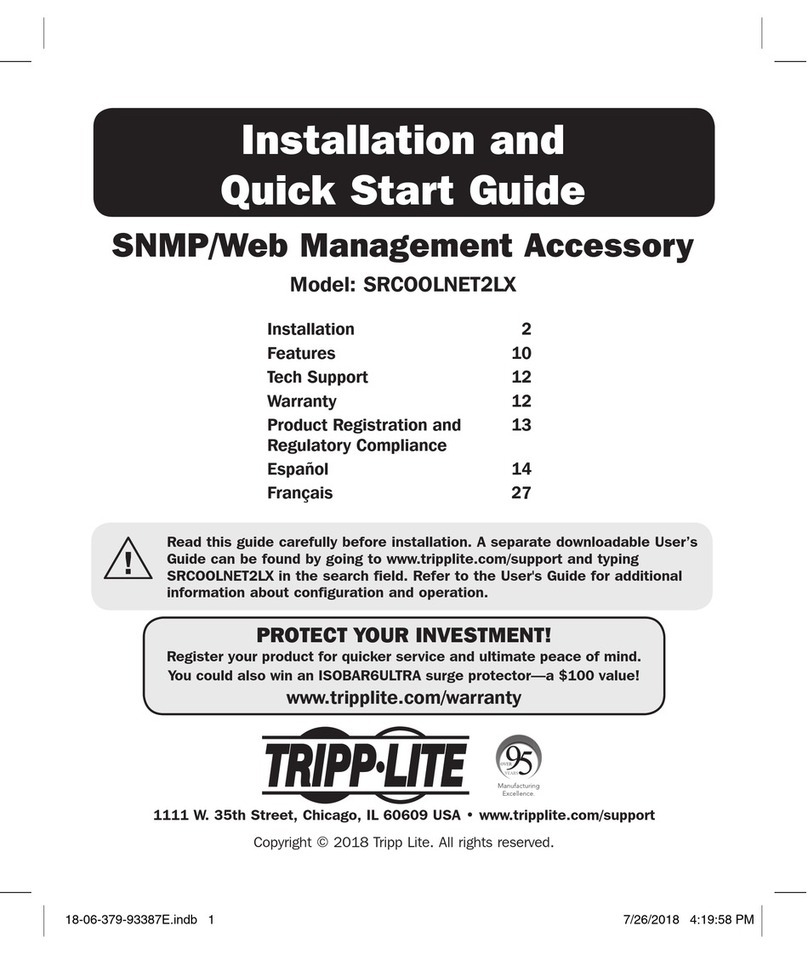
Tripp Lite
Tripp Lite SRCOOLNET2LX Installation and quick start guide
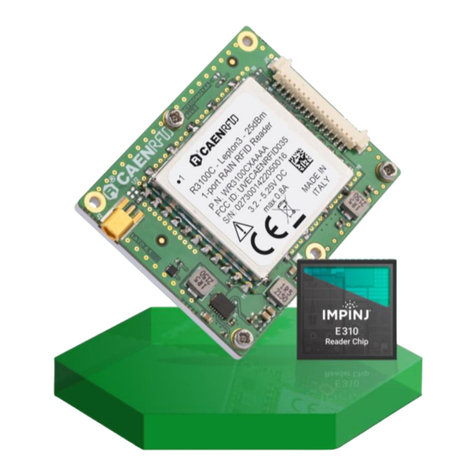
caenrfid
caenrfid easy2read Lepton3x1 Technical information manual
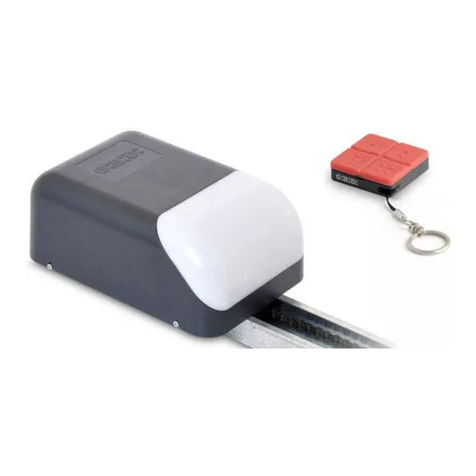
GiBiDi
GiBiDi GECO LUX GECO60 Instructions for installations
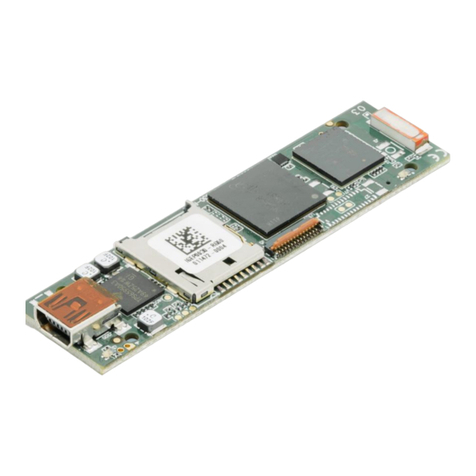
i-See
i-See IGEP DM3730 Hardware reference manual

